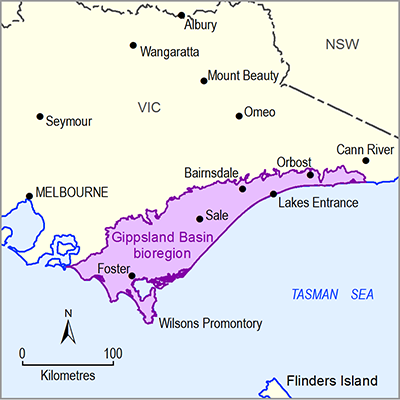- Home
- Assessments
- Bioregional Assessment Program
- Gippsland Basin bioregion
- 1.1 Context statement for the Gippsland Basin bioregion
- 1.1.4 Hydrogeology and groundwater quality
Summary
The main aquifer systems of the Gippsland Basin bioregion are those of the Gippsland Basin, with less extensive aquifer systems in the Moe Swamp and Tarwin sub-basins. The aquifers of the Moe Swamp and Tarwin sub-basins are disconnected from each other and from the Gippsland Basin as a result of structural compartmentalisation of these areas.
The groundwater flow systems of the Gippsland Basin bioregion are complex as a result of the dynamic depositional environment of the Gippsland Basin as well as tectonic movements experienced after deposition. The flow systems have been grouped into four flow systems based on the Victorian Aquifer Framework groupings of the geological units of the basin, including the bedrock aquifer system made up of fractured Paleozoic and Cretaceous rocks, the lower aquifer system of the Eocene to Oligocene age, the middle aquifer system of the Oligocene to Miocene age and the upper aquifer system of the Quaternary age. The groundwater flow systems of the Tarwin and Moe Swamp sub-basins are described separately as they form separate groundwater catchments.
Groundwater quality varies with depth as well as across the basin within and between the different aquifers. Many of the aquifers are high yielding and contain high quality groundwater. Groundwater is utilised for irrigation, urban water supply, stock and domestic use, industrial uses and power station cooling. Groundwater is also extracted as part of the oil and gas recovery process in the offshore part of the Gippsland Basin and as part of dewatering programmes for coal mine stabilisation in the Latrobe Valley.
Groundwater is also an important water source for many ecosystems across the Gippsland Basin bioregion, and shallow aquifers tend to receive both water from and discharge water to rivers in the bioregion.
There has been extensive investigation of the hydrogeology of the Gippsland Basin. This overview synthesises the existing knowledge of the hydrogeology of the Gippsland Basin and the Moe and Tarwin sub-basins.

